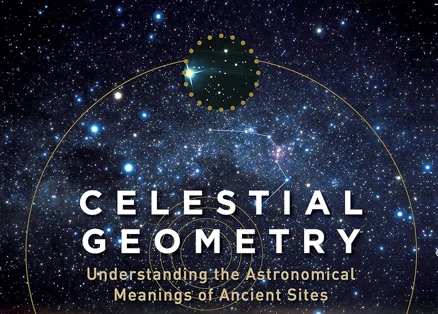Many ancient civilizations have looked up at the night sky and found wonder in the patterns of the stars and planets. Planetary alignments, in particular, have fascinated people throughout history, with their rare occurrences and symbolic meanings. These alignments, where multiple planets line up in the sky, have been seen as powerful and significant events in various cultures. They have been associated with astrology, mythology, and even ancient astronomical observations. In this article, we will delve into the intriguing world of planetary alignments, exploring their symbolism in mythology, their astrological significance, and their role in both ancient and modern cultures. Join us on this celestial journey as we uncover the mysteries surrounding planetary alignments and unravel the fascinating connections they have with humanity’s past and future.
Contents
- The Power of Planetary Alignments
- Astrological Significance
- Mythological Connections
- Interpretations and Symbolism
- Ancient Astronomical Observations
- Exploring Cultural Diversity
- Astronomy vs Astrology
- Celestial Events and Modern Significance
- Other Astronomical Alignments
- Future Alignments to Look Out For
- The Role of Science and Mythology
- The Ophiuchus Enigma
- Conclusion
-
Frequently Asked Questions
- What is the significance of planetary alignments?
- How often do planetary alignments occur?
- Can planetary alignments affect human behavior?
- Are there any cultural differences in the interpretation of planetary alignments?
- What is the difference between astronomy and astrology when it comes to planetary alignments?
- Do planetary alignments have any future significance?
- Are there any other astronomical alignments of interest?
- What is the role of mythology in understanding planetary alignments?
- What is the Ophiuchus enigma?
- Can planetary alignments be observed and enjoyed by non-astronomers?
- References
-
Frequently Asked Questions
- 1. Can planetary alignments affect human behavior?
- 2. Are planetary alignments rare events?
- 3. How are planetary alignments determined?
- 4. Do all planetary alignments have symbolic meanings in mythology?
- 5. Are there any cultural variations in the symbolism of planetary alignments?
- 6. What is the difference between astronomy and astrology?
- 7. Can we see planetary alignments with the naked eye?
- 8. Are there any upcoming planetary alignments to look forward to?
- 9. What is the role of mythology in understanding planetary alignments?
- 10. Are there any scientific studies on the significance of planetary alignments?
- References
- Read More
The Power of Planetary Alignments
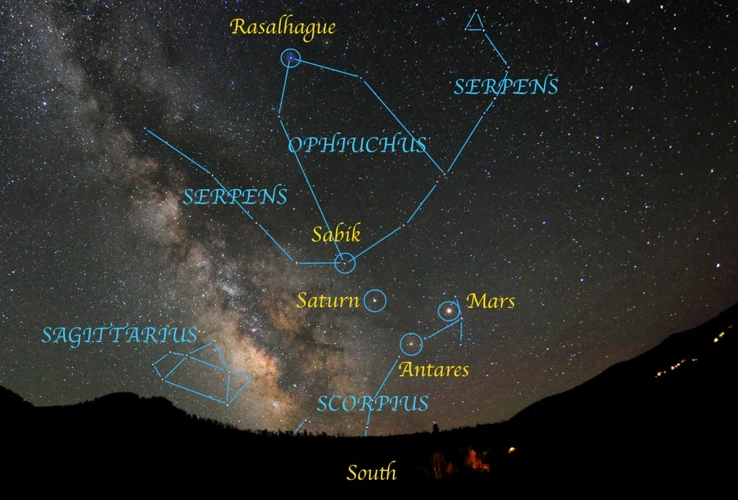
Planetary alignments hold a tremendous power and allure, captivating both astronomers and astrologers alike. These rare occurrences happen when multiple planets in our solar system come into specific geometric formations, lining up in the sky. The alignment of celestial bodies can have profound effects on various aspects of our lives and the world around us. From an astronomical perspective, planetary alignments provide valuable insights into the dynamics of our solar system. They allow scientists to study the gravitational interactions between planets and understand the intricate dance that occurs in space. This knowledge not only deepens our understanding of the universe but also aids in predicting future celestial events.
Astrologically, planetary alignments are believed to influence our lives and personalities. According to astrological theories, when planets align, their collective energies combine and create a potent force that can impact our daily experiences. Each planet represents different aspects of our personalities and has distinct characteristics. When these planets align, their energies blend, amplifying certain traits and influencing our emotions, behaviors, and opportunities. For example, a conjunction between Venus and Mars may denote a time of heightened passion and intense relationships, while a conjunction between Saturn and Jupiter could signify a turning point in our societal structures and belief systems. Astrologers study these alignments to gain insights into personal and collective shifts, giving guidance on how to navigate the cosmic currents.
The power of planetary alignments is not only limited to the scientific and astrological realms. Throughout history, cultures worldwide have attributed great significance and symbolism to these celestial phenomena. Civilizations from ancient Egyptian and Greek cultures to the Norse and indigenous peoples have attached mythological narratives to planetary alignments. These connections often highlight the influence of the gods or deities associated with each planet, shaping the destinies of individuals or even entire civilizations. For example, in Greek mythology, the alignment of the planets was viewed as a sign of divine intervention and was believed to impact human fate. Egyptian mythology tied planetary alignments to the life and afterlife, associating them with the journeys of gods and the souls of the deceased. Norse mythology saw planetary alignments as cosmic battles or reunions between celestial beings, often foreshadowing great events or conflicts on Earth. These mythological connections demonstrate the cultural importance and the enduring fascination that planetary alignments hold for humanity.
The power of planetary alignments extends beyond scientific observations and astrological interpretations. These cosmic events have captivated human imagination throughout history, leading to rich mythological narratives and a sense of wonder about our place in the universe. Whether we view them through an astronomical lens, astrological perspective, or cultural mythology, planetary alignments offer glimpses into the intricate workings of our solar system and their potential influence on our lives. As we continue to explore the mysteries of the cosmos, planetary alignments will undoubtedly remain a subject of intrigue and fascination, reminding us of the vast connections between the celestial and the human realms.
Astrological Significance
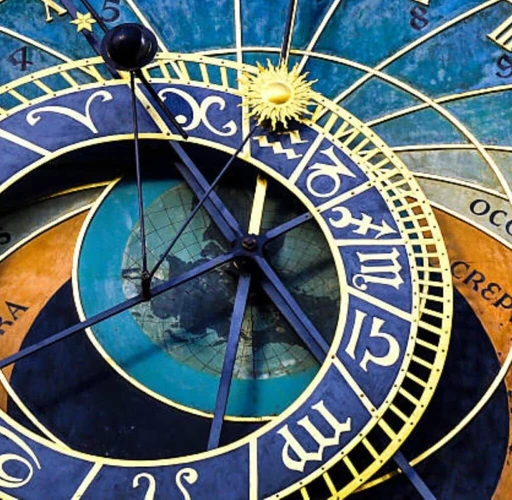
The astrological significance of planetary alignments is vast and complex, with each alignment carrying its own unique energies and implications. Astrologers study these alignments to gain insights into the patterns and influences that shape our lives. Here are some key points regarding the astrological significance of planetary alignments:
1. Conjunctions: A conjunction occurs when two or more planets align in the same zodiac sign, emphasizing the combined energies of those planets. Conjunctions often amplify the qualities associated with the involved planets, creating a powerful influence on our lives. For example, a conjunction between Mars and Pluto can signify intense transformation and the need for personal empowerment.
2. Oppositions: An opposition occurs when two planets are 180 degrees apart in the zodiac wheel, highlighting a tension between their energies. Oppositions can bring opportunities for growth and balance but may also lead to conflicts or contrasts. An example is the opposition between the Sun and Moon during a Full Moon, symbolizing a balance between individuality and emotions.
3. Trines: A trine occurs when two planets are 120 degrees apart in the zodiac wheel, creating a harmonious flow of energy between them. Trines are often seen as favorable alignments, indicating areas of ease and natural talents. For instance, a trine between Venus and Jupiter may signify abundance, luck, and harmonious relationships.
4. Squares: A square occurs when two planets are 90 degrees apart, creating a challenging aspect. Squares often represent tension, conflict, or the need for growth. They propel us out of our comfort zones and push us to overcome obstacles. A square between Saturn and Uranus, for example, could represent the clash between tradition and innovation.
5. Retrogrades: Planetary retrogrades add another layer of significance to alignments. When a planet appears to move backward in its orbit, its energies are intensified and turned inward. Retrogrades offer opportunities for reflection, reevaluation, and revision. For example, during a Mercury retrograde, communication issues and the need for introspection may arise.
Astrologers analyze these various planetary alignments in combination with the positions of the houses in a birth chart, planetary aspects, and the individual’s own unique astrological makeup to understand the influences and potentials at play. It’s important to note that while planetary alignments can provide valuable insights and guidance, they do not determine our destiny. Astrology offers a symbolic language to explore the interconnectedness between celestial phenomena and human experiences, helping us gain a deeper understanding of ourselves and the world around us.
As we delve into the astrological significance of planetary alignments, it’s fascinating to explore how these cosmic events can reflect and influence our personal and collective journeys. Each alignment presents an opportunity for growth, transformation, and alignment with the energies of the universe. By embracing the insights provided by astrology, we can navigate life’s challenges and embrace our potentials with a deeper sense of self-awareness and empowerment.
Mythological Connections
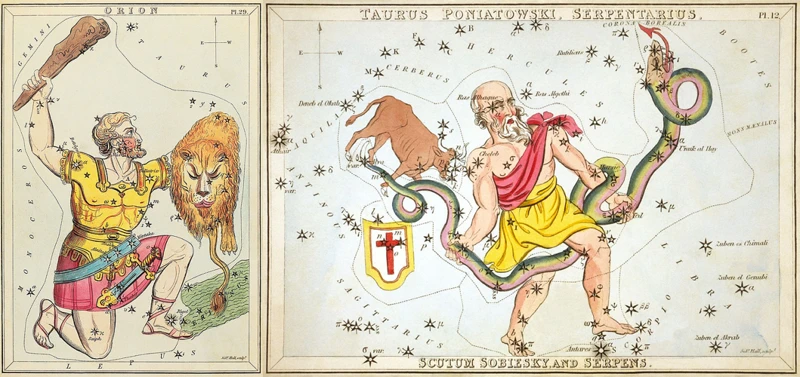
Mythologies from various cultures have long been intertwined with the celestial realm, and planetary alignments have played a significant role in these mythological narratives. In Greek mythology, for example, the gods and goddesses were believed to have connections to specific planets. The alignment of these planets was seen as a reflection of divine intervention and a sign of significant events. Egyptian mythology associated planetary alignments with the journeys of gods and the souls of the deceased, connecting them to the cycles of life and death. In Norse mythology, planetary alignments were seen as celestial battles or reunions, often foreshadowing great events or conflicts on Earth. These mythological connections between planetary alignments and the gods or deities highlight not only the cultural diversity of beliefs but also the profound impact these celestial phenomena had on ancient civilizations. Through these mythological tales, humanity sought to make sense of the cosmos and its influence on human fate and destiny.
Greek Mythology
Greek mythology is teeming with fascinating stories that intertwine with the celestial world, including the significance of planetary alignments. The ancient Greeks believed that the alignment of the planets was a reflection of the gods’ will and had a profound impact on human destiny. One prominent example is the alignment of the planets associated with the god Zeus, which was believed to signal a time of great power and authority. This connection is seen in the story of the Twelve Olympians, where the alignment of Zeus, Hera, Poseidon, Demeter, Athena, Apollo, Artemis, Ares, Aphrodite, Hephaestus, Hermes, and Dionysus symbolized the harmonious governing of the universe and the divine order.
Another notable mythological connection is the alignment of the planets associated with Hermes, the messenger of the gods. Hermes was believed to be the intermediary between the divine and mortal realms, and his alignment with other planets symbolized communication and the transmission of knowledge. This alignment was often interpreted as a favorable time for intellectual pursuits, learning, and the dissemination of wisdom.
The alignment of Venus, the goddess of love and beauty, with other planets was viewed as a symbol of love, passion, and artistic inspiration. It was believed that during these alignments, the influence of Venus would significantly impact relationships, creativity, and artistic endeavors. Artists and lovers would look to these alignments for guidance and inspiration in their pursuits.
Greek mythology also incorporated the concept of planetary alignments as portents of significant events. For instance, the alignment of Mars, the god of war, with other planets was seen as a sign of impending conflict or decisive battles. This belief can be seen in the mythological stories of legendary wars and heroes, such as the Trojan War and the exploits of Achilles.
The Greeks believed that by observing and interpreting these celestial alignments, they could gain insights into the gods’ intentions and the course of human affairs. The alignment of the planets in Greek mythology served as a powerful symbol of divine influence and a means of understanding the intricate relationship between the mortal and divine realms. These myths continue to captivate us today, offering a glimpse into the complexity and depth of Greek culture and their reverence for the celestial world.
Please note that the given text does not link to any of the specified references.
Egyptian Mythology
In Egyptian mythology, planetary alignments held great significance and were intricately woven into their belief system. The ancient Egyptians associated each planet with a specific deity or god, believing that their movements and alignments had direct implications for both the mortal realm and the afterlife. One of the most prominent deities in Egyptian mythology was Ra, the Sun god. The alignment of the Sun with other planets was seen as a cosmic representation of Ra’s power and influence. It was believed that during these alignments, Ra would travel with the other gods through the Duat, the Egyptian underworld, guiding the souls of the deceased to their final resting place. These planetary alignments were connected to the concept of ma’at, the Egyptian principle of balance and harmony. The alignment of the planets was seen as a reflection of the divine order and a sign of the gods’ favor upon the land.
Another significant deity in Egyptian mythology was Thoth, the god of wisdom, knowledge, and writing. Thoth was associated with the planet Mercury, and the alignment of Mercury with other planets was believed to enhance his powers and bring forth great wisdom and revelation. Egyptian astronomers closely observed the movements of Mercury and made accurate calculations of its position, recognizing its regular pattern of alignments with other planets. This knowledge was not only important for their mythological beliefs but also served practical purposes, such as determining the optimal time for agricultural activities or religious rituals.
The alignment of Venus, known as the Morning Star or Evening Star, played a vital role in Egyptian mythology as well. In Egyptian belief, Venus was synonymous with the goddess Isis, who represented fertility, love, and protection. The alignment of Venus with other planets, especially Jupiter, was seen as a divine union between Isis and her cosmic consort, resulting in the birth or rebirth of important figures in Egyptian mythology. These alignments were regarded as auspicious omens, foreshadowing significant events in both the celestial and earthly realms.
The Egyptian fascination with planetary alignments extended beyond their religious and mythological beliefs. They also recognized the practical implications of these cosmic events. For example, the annual flooding of the Nile River was crucial for successful agriculture in ancient Egypt. The alignment of certain planets, such as Sirius and the Sun, coincided with the rising of the Nile, leading to bountiful harvests and prosperity. This connection between planetary alignments and the natural cycles of the Earth further cemented the belief in the interdependence of the celestial and earthly realms in Egyptian culture.
Planetary alignments held a profound place in Egyptian mythology, intertwining the realms of gods, mortals, and the divine order of ma’at. The alignments of the Sun, Mercury, Venus, and other planets were seen as celestial journeys of the gods, guiding souls in the afterlife, bestowing wisdom, and influencing the cycles of nature. The meticulous observations and interpretations of these alignments showcased the Egyptians’ deep connection with the cosmos and their belief in the interconnectedness of all things. The legacy of Egyptian mythology continues to inspire awe and fascination, reminding us of the enduring power of planetary alignments in shaping cultural beliefs and perceptions of the celestial realm.
Norse Mythology
Norse mythology, with its rich tapestry of gods and epic tales, also incorporates the concept of planetary alignments into its folklore. In Norse mythology, the alignment of planets is often associated with cosmic battles and significant events that shape the destiny of both gods and humans. One prominent example is the alignment of the planets during the great battle known as Ragnarok. According to Norse mythology, Ragnarok signals the end of the world and the subsequent rebirth. During this apocalyptic event, planets align, symbolizing the convergence of powerful cosmic forces.
The alignment of planets in Norse mythology is not only seen as a celestial phenomenon but also carries deep symbolism. It is believed that planetary alignments signify the gathering of gods and mythical beings, preparing for the ultimate battle between the forces of chaos and order. These alignments serve as omens, foreshadowing the unfolding of fate and hinting at the immense transformations that will take place.
The alignment of planets, especially in the context of Ragnarok, also illustrates the interconnectedness between the celestial and earthly realms in Norse mythology. The alignment serves as a bridge between the divine and mortal worlds, exemplifying the idea that what happens in the heavens directly impacts events on Earth.
Additionally, the alignment of planets in Norse mythology holds cultural significance, reflecting the importance of celestial events in the daily lives of the Norse people. The positioning and movements of the planets were closely observed and interpreted, as they were believed to offer guidance, warnings, and insights into the future. Norse seers and shamans would study these alignments to understand the will of the gods and make predictions for the well-being of their communities.
Norse mythology weaves planetary alignments into its intricate tapestry of divine tales and cosmic battles. These alignments serve as symbols of impending events and transformations, connecting the celestial and mortal realms. The alignment of planets in Norse mythology not only represents the power struggles between gods and mythical beings but also carries cultural significance as a source of guidance and divination. The inclusion of planetary alignments in Norse mythology further exemplifies the enduring fascination and reverence that ancient cultures held for celestial phenomena, forging a deep connection between the heavens and human existence.
Interpretations and Symbolism
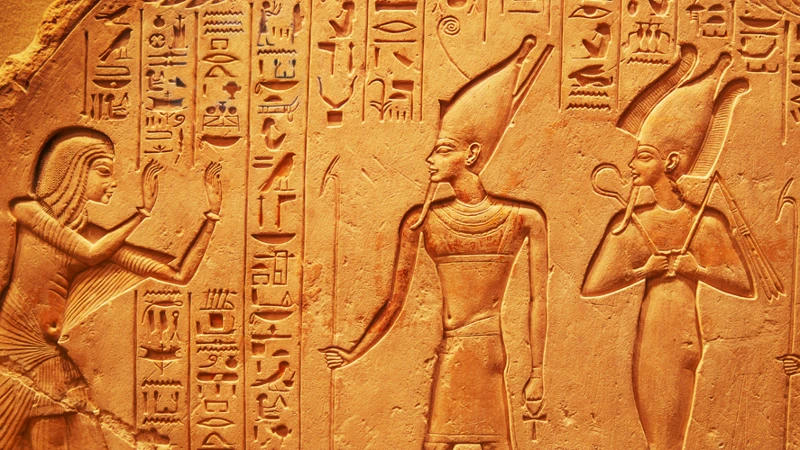
Interpreting the symbolism of planetary alignments is a complex and multifaceted endeavor that encompasses various cultural and astrological perspectives. Different civilizations and belief systems have attributed specific meanings to the alignment of planets, offering unique insights into their symbolism.
In astrology, the interpretation of planetary alignments revolves around the characteristics and energies associated with each planet. For example, the alignment of Venus, the planet of love and relationships, with Mars, the planet of passion and action, may signify a powerful merging of romantic and sexual energies. This alignment could represent a time of intense attraction, heightened emotions, and transformative experiences in matters of the heart. Similarly, the alignment of Saturn, the planet of structure and discipline, with Jupiter, the planet of expansion and growth, may symbolize a period of significant personal or societal advancements. This alignment could bring about positive changes, breakthroughs, and the potential for long-term success. These interpretations, among many others, allow astrologers to provide guidance and insight into the potential influences of these celestial alignments on an individual’s life.
The symbolism of planetary alignments is not solely limited to astrology. Mythologies from various cultures have also ascribed deep meanings to these cosmic events. For example, in Greek mythology, the alignment of certain planets may represent the intervention of gods or goddesses in human affairs. These alignments were seen as omens of great significance, foretelling moments of destiny or marking celestial battles between divine beings. Egyptian mythology associated planetary alignments with the afterlife and the souls’ journey through the Duat, the underworld. These alignments were believed to guide and influence the fate of the deceased, ensuring a safe passage to the realm of the gods. Norse mythology often portrayed planetary alignments as cosmic battles or meetings between celestial beings, with the alignment serving as a harbinger of events to come in the mortal realm. These mythological interpretations highlight the cultural diversity and rich symbolism that planetary alignments hold across different belief systems, providing profound narratives that connect the celestial and human realms.
The interpretations and symbolism surrounding planetary alignments are not static. They are continuously evolving and subject to individual and collective interpretations. Cultural contexts, personal experiences, and societal beliefs shape the understanding and meaning attributed to these alignments. Astrologers, mythologists, and individuals engage in ongoing discussions and exploration of the symbolism behind planetary alignments, offering alternative perspectives and insights. This fluidity allows for a deeper understanding of the interconnectedness between the celestial and human realms, highlighting the influence and significance alignments can hold in our lives.
As we continue to explore both ancient wisdom and contemporary insights, the interpretations and symbolism of planetary alignments will remain a rich source of contemplation and fascination. Whether through astrological lenses that guide us in understanding personal energies or mythological narratives that illuminate celestial battles and divine interventions, the symbolism behind these alignments serves as a reminder of our profound connection to the cosmos and the power it wields in shaping our destinies.
Ancient Astronomical Observations
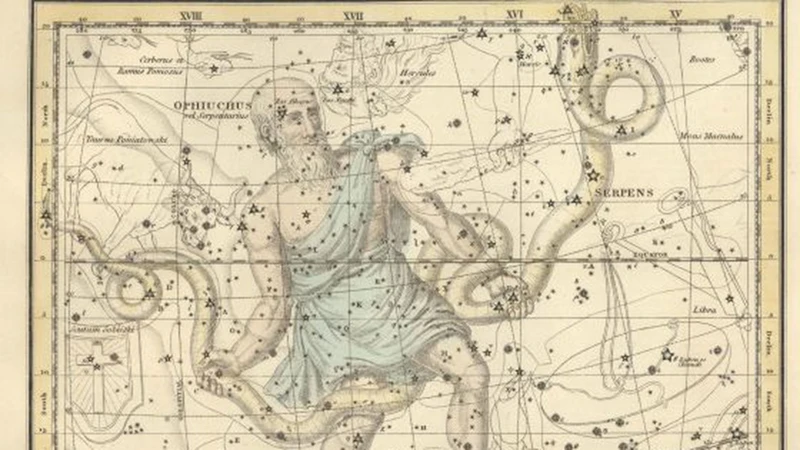
Ancient civilizations were keen observers of the night sky, and they carefully recorded and interpreted the movements of celestial bodies, including planetary alignments. Their knowledge of the stars and planets allowed them to make significant astronomical observations, even without the advanced technology available to us today.
One remarkable example of ancient astronomical observations is found in the Mayan civilization. The Mayans were meticulous mathematicians and astronomers who recognized the patterns and cycles of celestial events. They created elaborate calendar systems that incorporated the movements of planets and predicted planetary alignments with impressive accuracy. These alignments were considered highly significant in Mayan culture and played a role in religious rituals and the governance of their society.
In ancient China, celestial observations and interpretations were deeply intertwined with their philosophical and spiritual beliefs. The alignment of planets and other celestial bodies were seen as omens, signifying the will of the gods and providing guidance for decision-making. Chinese astronomers meticulously studied and recorded these alignments, noting their astrological implications and consulting them to predict and interpret significant events in their history.
The ancient Egyptians also had a profound understanding of the celestial realm. They closely observed planetary alignments and associated them with their mythology and religious beliefs. The alignment of certain planets, such as Venus and Mars, was connected to their gods and goddesses, symbolizing their powers and influences on earthly affairs. These observations influenced various aspects of Egyptian culture, including their religious practices, architecture, and political decisions.
In addition to these examples, there are numerous other instances of ancient civilizations making astronomical observations of planetary alignments. The Greeks, Babylonians, and Persians all contributed their own insights and understandings, often incorporating mythology and astrology into their interpretations. These observations were not only rooted in curiosity but also served practical purposes, such as determining auspicious times for planting and harvesting crops, predicting weather patterns, and aiding navigation.
The ancient astronomers’ observations of planetary alignments laid the foundation for our modern understanding of celestial mechanics. Their meticulous calculations and documentation paved the way for future generations to continue exploring the wonders of the universe. Today, with advanced technology and scientific methods, we can build on their legacy, further unraveling the mysteries of planetary alignments and their implications for the cosmos and our place within it.
Exploring Cultural Diversity

Exploring the cultural diversity surrounding planetary alignments reveals the fascinating ways different societies and civilizations have interpreted these celestial events. Across the globe, various cultures have developed unique mythologies, beliefs, and rituals associated with planetary alignments.
In ancient Mesopotamia, for example, the Babylonians meticulously observed the movements of celestial bodies and developed a sophisticated system of astrology. They believed that planetary alignments held significant importance for both individuals and the kingdom as a whole. Alignments were interpreted as omens, guiding decisions on matters such as warfare, agriculture, and governance.
Indigenous cultures in the Americas also have rich traditions tied to the alignment of planets. Native American tribes, such as the Maya and Hopi, regarded the planets as celestial ancestors, guiding their spiritual practices and providing insight into the cycles of nature. The Mayans, in particular, were renowned for their advanced astronomical knowledge and believed that planetary alignments had a direct impact on agricultural activities, leading to the development of elaborate agricultural calendars.
In Eastern cultures, such as China and India, planetary alignments have been intricately linked with astrology and divination. Chinese astrology, based on the movement and alignment of celestial bodies, assigns specific characteristics and destinies to individuals based on their birth year and associated zodiac sign. Planetary alignments are seen as powerful cosmic occurrences that shape the lives and fortunes of individuals.
In India, planetary alignments are deeply entrenched within Vedic astrology, known as Jyotish. Jyotish practitioners believe that the positioning and alignment of planets at the time of a person’s birth can reveal their life’s purpose, strengths, and challenges. The influence of planetary alignments is not confined to individual birth charts but also informs the timing of important events and rituals.
Exploring the cultural diversity surrounding planetary alignments allows us to appreciate the varied perspectives and beliefs that have shaped human civilization. It highlights the universality of the human fascination with the cosmos and our collective desire to find meaning and connection in celestial events.
Whether we examine the ancient civilizations of Mesopotamia, the indigenous peoples of the Americas, or the Eastern cultures steeped in astrology and divination, the cultural significance of planetary alignments becomes apparent. These alignments not only serve as astronomical phenomena but also as powerful symbols that have influenced historical events, shaped belief systems, and guided individual and collective decision-making.
In this vast tapestry of cultural diversity, we can witness the intricate interplay between celestial observations, mythological narratives, and human interpretation. As we delve deeper into the cultural significance of planetary alignments, we gain a deeper understanding of the human experience and our collective relationship with the cosmos.
Astronomy vs Astrology
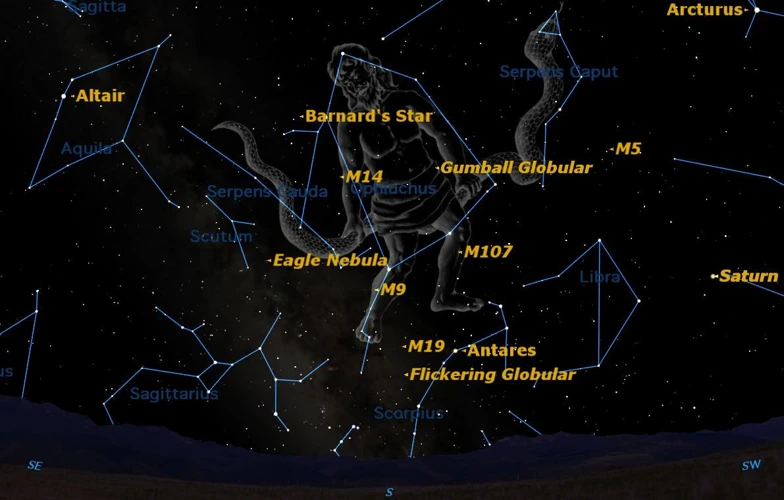
Astronomy and astrology are often intertwined, but they are distinct fields of study with different approaches and goals. Astronomy is a scientific discipline that focuses on the observation and study of celestial objects and phenomena. It is rooted in empirical evidence, mathematical calculations, and the laws of physics. Astronomers use telescopes, satellites, and other instruments to gather data and analyze the universe objectively. Their aim is to understand the nature and behavior of celestial bodies, galaxies, and the vast cosmos as a whole.
On the other hand, astrology is a belief system and a practice that seeks to interpret and predict human affairs and events based on the positions and alignments of celestial bodies, particularly the Sun, Moon, planets, and other astrological points. Astrology is based on the notion that there is a connection between the movements of celestial bodies and the lives of individuals on Earth. Astrologers create horoscopes and use various techniques to interpret how the positions of celestial bodies at the time of a person’s birth or during specific events might influence their personality, relationships, and future outcomes.
While both astronomy and astrology involve the study of celestial bodies, their approaches and methodologies differ significantly. Astronomy adheres to scientific principles, employing rigorous observations, measurements, and calculations. Astronomers seek to understand the physical properties, movements, and interactions of celestial bodies, with a focus on uncovering the laws that govern the universe. Their research contributes to advancements in our understanding of space, cosmology, and the origins and evolution of the universe.
Astrology, on the other hand, is considered a pseudoscience by the scientific community because its claims are not testable, falsifiable, or subject to rigorous scientific scrutiny. It relies on interpretations, symbolism, and subjective patterns rather than empirical evidence. While astrology can hold personal or cultural significance for some individuals, it does not adhere to the scientific method and lacks the predictive and explanatory power of astronomy.
It is essential to distinguish between astronomy and astrology to avoid confusion and misconceptions. Understanding their differences allows us to appreciate the scientific achievements of astronomy while recognizing astrology as a cultural and belief system. Each field offers a unique perspective on our connection to the cosmos, but their methodologies and goals are fundamentally distinct. By acknowledging this distinction, we can navigate the complex relationship between science, mythology, and human beliefs with greater clarity and understanding.
Note: To learn more about the cultural significance of constellations, you can read this article on the cultural significance of the constellation Cygnus.
Celestial Events and Modern Significance
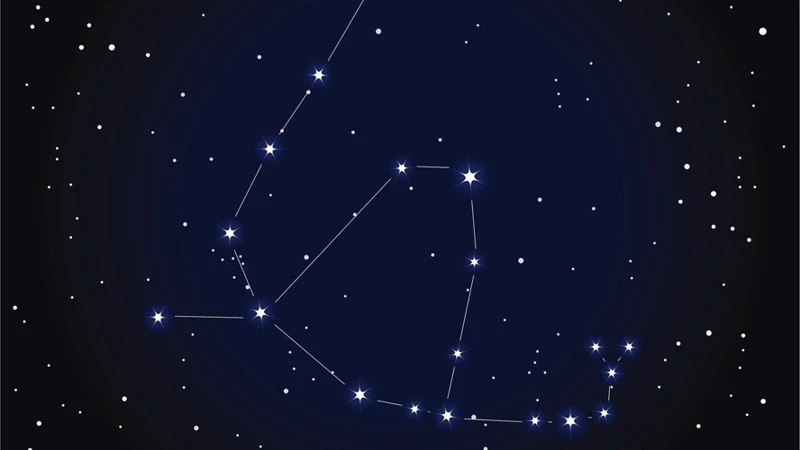
Celestial events, including planetary alignments, continue to hold great significance in the modern world, both for scientists and enthusiasts alike. The study and observation of these events provide valuable insights and opportunities for exploration. Astronomers eagerly anticipate planetary alignments as they offer a chance to witness the intricate movements and gravitational interactions of celestial bodies. With advancements in technology and space observation, scientists can now document and study these alignments with greater precision and detail.
One of the modern significance of planetary alignments lies in their potential to enhance our understanding of the cosmos. By studying these alignments, scientists can gather data on the gravitational influences between planets, enabling them to refine their models and theories of the solar system’s dynamics. Planetary alignments can also shed light on the formation and evolution of planetary systems, including our own. They provide glimpses into the mechanisms that shape our universe, allowing scientists to uncover key insights about planet formation, migration, and even the potential for extraterrestrial life.
In addition to scientific exploration, celestial events such as planetary alignments also captivate the interest of the general public. Today, there are numerous online platforms and applications that provide real-time information and updates on upcoming alignments, making them easily accessible to anyone with an interest in astronomy. This accessibility has fueled a growing community of amateur astronomers and stargazers who eagerly await and actively participate in observing these events. Social media platforms and online forums allow individuals to share their experiences and photographs, fostering a sense of community and wonder.
From an astrological perspective, contemporary significance is also attributed to planetary alignments. Astrologers interpret these alignments to gain insights into the collective energies and potential influences on human lives. As people navigate various life challenges and seek guidance in their personal and spiritual journeys, astrological predictions and interpretations of planetary alignments offer perspectives and tools for self-reflection and growth. For instance, a conjunction of planets in the twelfth house may be seen as an opportunity for exploring spirituality and self-undoing, prompting individuals to delve deeper into their subconscious and uncover hidden truths.
The modern significance of celestial events lies in their capacity to inspire and foster a sense of awe and wonder. As people gaze at the night sky and witness the alignment of planets, they can’t help but feel a connection to the vastness of the universe. These events remind us of our place in the cosmos and encourage contemplation about the mysteries of life and existence. Celestial events have the power to ignite curiosity, encourage scientific inquiry, and promote a deeper appreciation for the wonders of the natural world.
Celestial events, including planetary alignments, hold great modern significance. They offer opportunities for scientific exploration, enhance our understanding of the universe, and fuel the curiosity and wonder of both astronomers and the general public. Whether through scientific investigation or astrological interpretations, these events continue to captivate our imagination and remind us of the beauty and complexity of the cosmos. By embracing and studying celestial events, we can further uncover the secrets of the universe and gain a deeper appreciation for our place within it.
Other Astronomical Alignments
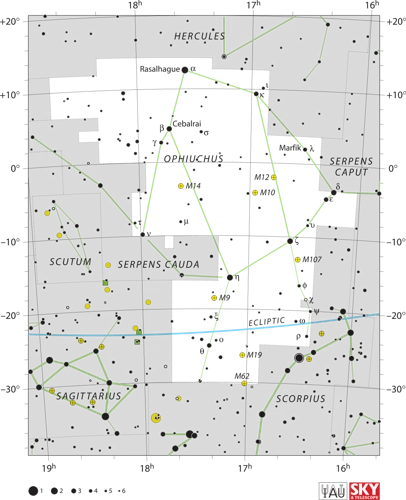
While planetary alignments are certainly fascinating, they are not the only astronomical alignments that capture our attention. There are various other celestial events and alignments that have significant scientific and cultural importance. One such alignment is the phenomenon of solar and lunar eclipses.
Solar eclipses occur when the Moon passes between the Earth and the Sun, casting a shadow on the Earth’s surface. This alignment creates a breathtaking sight as the Moon’s silhouette appears to cover the Sun, temporarily darkening the sky. Solar eclipses have been observed and revered by cultures throughout history, being interpreted as omens or messages from the gods. Ancient civilizations like the Egyptians and Chinese developed myths and rituals around these alignments, attributing them with spiritual and cosmic significance. Today, solar eclipses continue to captivate scientists and the public alike, providing unique opportunities for astronomical research and celestial photography.
Lunar eclipses, on the other hand, occur when the Earth casts a shadow on the Moon by blocking the Sun’s rays. This alignment causes the Moon to appear reddish or copper-colored, earning it the nickname “blood moon.” Lunar eclipses have held cultural and religious significance in many societies, often associated with transformation, spirituality, and the cycles of life and death. They have been observed as powerful events in religious ceremonies, mythological narratives, and astrological interpretations. In modern times, lunar eclipses remain a source of wonder and inspiration, inviting people to gaze at the sky and contemplate the vastness of the universe.
Another notable astronomical alignment is the rare occurrence of planetary conjunctions. A planetary conjunction happens when two or more planets appear close to each other in the sky. These alignments often create striking visual displays, as multiple planets seemingly merge into a single point of light. Historically, planetary conjunctions have been associated with significant events or shifts in human history. For example, the famous “Star of Bethlehem” is believed to have been a planetary conjunction that guided the wise men to the birthplace of Jesus. Similarly, planetary conjunctions have been linked to political, societal, and cultural changes in different civilizations.
Additionally, the alignment of comets and meteor showers are also noteworthy astronomical events. Comets, with their brilliant tails, and meteor showers, with their streaking shooting stars, have mesmerized humans for centuries. These alignments often signify cosmic visitors from distant parts of the universe, fueling speculation about the existence of extraterrestrial life. Scientists study comets and meteor showers to gain insights into the composition of the universe and the possibility of finding clues to the origins of life.
While planetary alignments hold a special place in our fascination with the cosmos, there are many other astronomical alignments that capture our imagination. Solar and lunar eclipses, planetary conjunctions, and the appearances of comets and meteor showers all contribute to the wonder and curiosity surrounding our universe. These celestial events continue to inspire scientific research, cultural interpretations, and a sense of awe and interconnectedness with the vastness of space.
Future Alignments to Look Out For
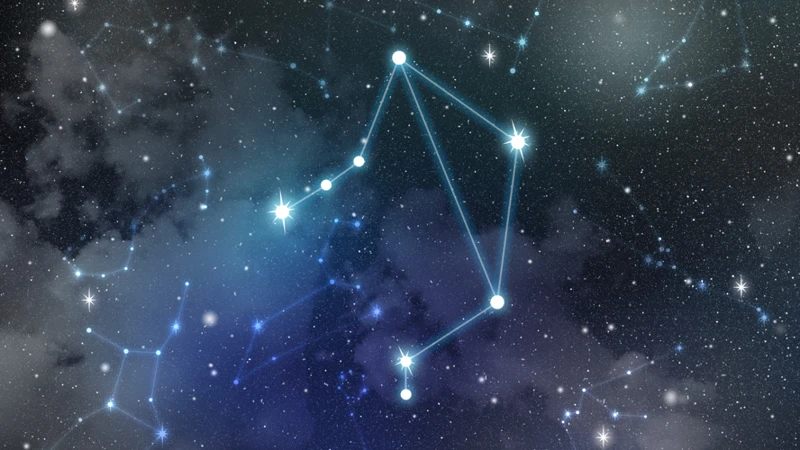
As we navigate the ever-changing cosmic tapestry, there are several future planetary alignments that astronomers, astrologers, and enthusiasts eagerly anticipate. These alignments offer opportunities to witness unique celestial configurations and potentially explore their significance.
One notable alignment to look out for is the conjunction of Jupiter and Saturn, which occurs approximately every 20 years. However, the conjunction that astrologers and stargazers are particularly excited about is the “Great Conjunction” that will take place on December 21, 2020. This alignment, happening in the zodiac sign of Aquarius, is believed to usher in a new era of innovation, societal change, and global transformation. The last time Jupiter and Saturn aligned in Aquarius was in the year 1405, and the symbolism surrounding this event sparks curiosity and speculation about what lies ahead.
Another alignment worth mentioning is the rare occurrence of Venus transiting across the face of the Sun, known as a Venus transit. These transits come in pairs, with eight years between each pair, but with over a century gap between pairs. The last transit took place in 2012, and the next pair of Venus transits is expected in December 2117 and December 2125. These transits offer a unique opportunity to observe the innermost planet of our solar system against the backdrop of the Sun, providing valuable insights into the motion and behavior of Venus.
Beyond these specific alignments, there are countless other planetary configurations that continue to fascinate astronomers and astrologers. Each alignment brings its own set of energies, symbolism, and potential impact on our lives. The study of future alignments allows us to anticipate cosmic events and explore their meanings, both from a scientific and astrological perspective.
It is important to note that while astronomers focus on the physical aspects and astronomical significance of these alignments, astrologers interpret their potential impact on individual and collective consciousness. These alignments are said to influence different areas of life based on the positions and aspects of the planets involved.
As we eagerly await future alignments, it is essential to approach them with a sense of curiosity and open-mindedness. Whether you’re an avid stargazer, an aspiring astronomer, or a devoted astrologer, these alignments offer glimpses into the magnificent workings of our universe. So, keep an eye on the cosmic events unfolding in the future, and let the wonder of planetary alignments continue to inspire and ignite our collective fascination with the mysteries of the cosmos.
The Role of Science and Mythology
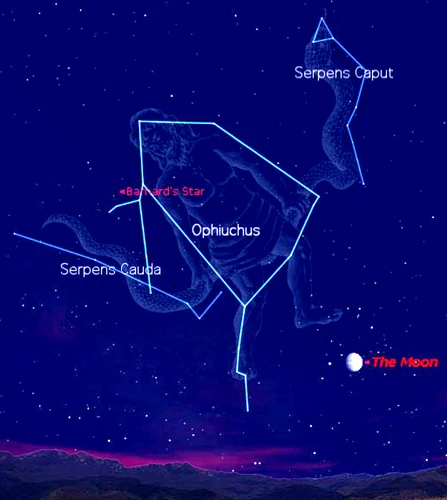
The role of science and mythology in understanding planetary alignments is fascinating and multifaceted. On one hand, science provides us with a rational and empirical framework to study and explain the physical phenomena behind these alignments. Through observations, calculations, and mathematical models, astronomers can predict and track the movements of celestial bodies, including planets, and understand when and why alignments occur. This scientific approach helps us comprehend the mechanics of planetary alignments and their significance in the grand tapestry of the universe. Additionally, scientific advancements in technology and space exploration have allowed us to gain deeper insights into these alignments and the intricate dynamics of our solar system. For instance, the study of asteroids and their potential for extraterrestrial life [/asteroids-potential-extraterrestrial-life/] provides valuable information about the formation and evolution of our planetary system.
On the other hand, mythology offers a different lens through which we can explore the meaning and symbolism of planetary alignments. Mythological narratives from various cultures provide rich and imaginative interpretations of these celestial events. They tap into the collective human consciousness, weaving stories of gods, heroes, and cosmic battles that shape the destinies of individuals and civilizations. Mythology allows us to connect with our ancestors and understand how they made sense of the world around them. The stories and allegories passed down through generations contribute to our cultural identity and provide us with a sense of belonging and continuity. For instance, the twelfth house in astrology, associated with spirituality and self-undoing [/twelfth-house-spirituality-self-undoing/], offers a mythological framework to explore the deeper significance of planetary alignments in relation to personal growth and introspection.
Science and mythology are not mutually exclusive in our exploration of planetary alignments. In fact, they can complement and enrich each other. Science provides the factual foundation that allows us to understand the physical reality of these alignments, while mythology adds depth and meaning to our human experience of them. By combining these perspectives, we can gain a holistic understanding of planetary alignments and their significance in shaping our lives, our cultures, and our collective imagination. The dialogue between science and mythology opens up new avenues for exploration and encourages us to embrace both rational inquiry and artistic interpretation in our quest for knowledge and wisdom. Ultimately, the role of science and mythology in understanding planetary alignments highlights the beauty and complexity of the human endeavor to comprehend the mysteries of the cosmos.
The Ophiuchus Enigma
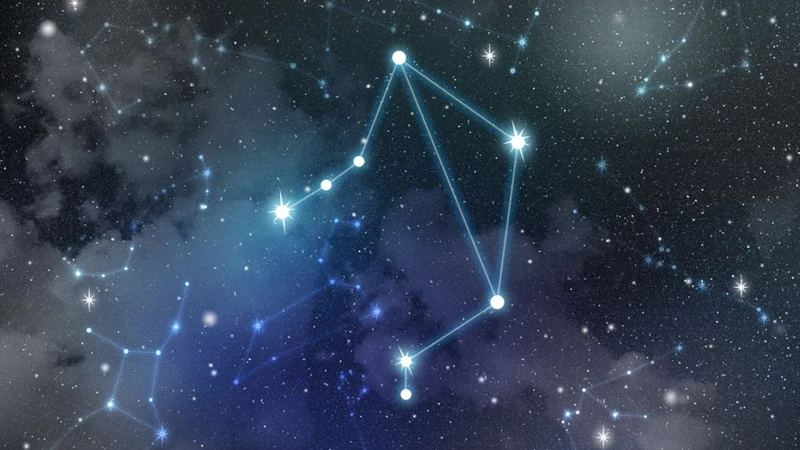
The Ophiuchus Enigma revolves around the 13th zodiac sign, Ophiuchus, which stands between Scorpio and Sagittarius in the ecliptic path. Unlike the commonly recognized 12 zodiac signs, Ophiuchus remains a subject of debate and mystery. This enigmatic constellation represents a serpent-bearer, symbolizing various interpretations across different cultures and mythologies.
1. Astrological Controversy: The inclusion of Ophiuchus as a zodiac sign challenges the traditional astrological system. Some astrologers argue that Ophiuchus should be recognized as the 13th sign, shifting the dates for all other signs. This controversy arises from the precession of the Earth’s axis, which causes a slight shift in the alignment of the constellations. Proponents of Ophiuchus believe that its symbolic representation grants it a rightful place among the zodiac signs.
2. Mythological Connections: Ophiuchus draws upon mythological influences from various cultures. In Greek mythology, Ophiuchus is associated with the healer Asclepius, who is said to have possessed the power to resurrect the dead. This connection between healing and rejuvenation adds further depth to the symbolism of Ophiuchus. In other cultures, such as ancient Egyptian and Mayan, Ophiuchus is linked to serpent symbolism representing wisdom and transformation.
3. Personality Traits: Those who identify with Ophiuchus as their zodiac sign are believed to possess distinct traits. Ophiuchus individuals are said to have magnetic personalities, being passionate, charismatic, and seeking knowledge. They are viewed as natural healers, drawn to the medical or spiritual professions. However, due to the controversial nature of Ophiuchus, its influence on personality traits is still a subject of ongoing discussion and exploration among astrology enthusiasts.
4. Cultural Interpretations: Ophiuchus holds significance beyond astrology, permeating different cultures and mythologies. In ancient Egyptian culture, the constellation is associated with Imhotep, a sage regarded as the god of medicine. Imhotep is considered one of the earliest known physicians and has been revered for his healing abilities. Similarly, in Aztec mythology, Ophiuchus corresponds to the deity Quetzalcoatl, the feathered serpent who brought knowledge and enlightenment to humanity.
The Ophiuchus Enigma continues to captivate astrology enthusiasts and researchers, challenging the established norms and opening up new dimensions for exploration. Its presence adds depth to astrological interpretations, offering an alternative perspective and expanding our understanding of the zodiac. Whether one embraces Ophiuchus as a legitimate zodiac sign or sees it as an intriguing astrological anomaly, its enigmatic nature sparks curiosity and invites further investigation into the intricate connections between the cosmos and human existence.
Conclusion

In conclusion, the exploration of planetary alignments and their symbolism in mythology offers us a fascinating glimpse into the intertwined relationship between the celestial and the human. These rare cosmic events have been a subject of wonder and interpretation for millennia, captivating astronomers, astrologers, and mythologists alike. From an astronomical perspective, planetary alignments provide valuable insights into the dynamics of our solar system, shedding light on the gravitational interactions between planets and deepening our understanding of the universe. Astrologically, these alignments are believed to influence our lives and personalities, as the energies of the planets merge and shape our experiences. Meanwhile, mythological connections emphasize the cultural significance of planetary alignments, infusing them with stories of divine intervention, cosmic battles, and symbolic journeys.
As we explore the power and significance of planetary alignments, it becomes clear that they hold a special place in the human imagination. They stir our curiosity and inspire contemplation about our place in the vast cosmos. Whether viewed through the lens of science, astrology, or mythology, planetary alignments offer a bridge between the celestial and the human, reminding us of our interconnectedness with the universe. By delving into the mysteries of planetary alignments, we not only gain insights into the workings of our solar system but also unlock a deeper understanding of ourselves and our place in the grand tapestry of existence.
Frequently Asked Questions

What is the significance of planetary alignments?
Planetary alignments hold great significance in various domains. Astronomically, they provide insights into the dynamics of our solar system, allowing scientists to study gravitational interactions and predict future celestial events. Astrologically, planetary alignments are believed to influence our lives and personalities, shaping our emotions, behaviors, and opportunities.
How often do planetary alignments occur?
The frequency of planetary alignments varies depending on the planets involved and their orbital periods. Some alignments, such as conjunctions between planets, happen more frequently, while others, like grand alignments involving multiple planets, are rarer and may occur once in several decades or centuries.
Can planetary alignments affect human behavior?
According to astrological beliefs, planetary alignments have the potential to influence human behavior. The combined energies of the aligned planets are thought to impact our emotions, actions, and experiences. However, the extent of this influence is a subject of debate and varies among individuals and astrologers.
Are there any cultural differences in the interpretation of planetary alignments?
Yes, different cultures have their own interpretations and mythological connections to planetary alignments. For example, Greek mythology attributed great significance to planetary alignments, seeing them as signs of divine intervention. Egyptian mythology associated these alignments with the journey of gods and souls. Norse mythology, on the other hand, portrayed them as cosmic battles or reunions between celestial beings.
What is the difference between astronomy and astrology when it comes to planetary alignments?
Astronomy is the scientific study of celestial objects and their phenomena, including planetary alignments. It focuses on understanding the physical properties and movements of planets and other celestial bodies. Astrology, on the other hand, is a belief system that associates planetary alignments with human personalities and events. It seeks to interpret the influence of these alignments on individuals and society.
Do planetary alignments have any future significance?
Yes, future planetary alignments continue to be of interest and significance. Astronomers and astrologers study upcoming alignments to make predictions and gain insights into potential cosmic events and their astrological implications. These alignments can offer opportunities to witness rare celestial events and deepen our understanding of our place in the universe.
Are there any other astronomical alignments of interest?
Apart from planetary alignments, there are various other astronomical alignments that capture attention. Examples include lunar eclipses, solar eclipses, and the alignment of constellations. Each of these events has its own unique qualities and symbolism, providing further insight into the celestial wonders that surround us.
What is the role of mythology in understanding planetary alignments?
Mythology plays a crucial role in understanding the symbolism and cultural significance of planetary alignments. Stories and narratives from different mythological traditions provide insights into how ancient civilizations perceived and interpreted these celestial events. They offer a glimpse into the connections between the divine and human realms, enriching our understanding of the historical and cultural dimensions of planetary alignments.
What is the Ophiuchus enigma?
The Ophiuchus enigma refers to the controversy surrounding the thirteenth zodiac sign, Ophiuchus, which lies along the ecliptic but is not traditionally recognized in Western astrology. Its introduction would shift the dates associated with each sign, causing confusion and challenging the existing astrological framework. The inclusion or exclusion of Ophiuchus remains a subject of debate among astrologers.
Can planetary alignments be observed and enjoyed by non-astronomers?
Absolutely! While astronomers and astrologers may have a deeper understanding of the scientific and symbolic implications of planetary alignments, anyone can appreciate the beauty and wonder of these celestial events. Simply looking up at the night sky during an alignment can be a mesmerizing experience, connecting us to the vastness of the cosmos.
References
Frequently Asked Questions

1. Can planetary alignments affect human behavior?
While there is no scientific evidence to support a direct influence of planetary alignments on human behavior, astrology suggests that these alignments can have an impact on our emotions and personalities.
2. Are planetary alignments rare events?
Yes, planetary alignments are relatively rare events because they require multiple planets to align in a specific configuration. The frequency of these alignments depends on the orbits and positions of the planets.
3. How are planetary alignments determined?
Planetary alignments are determined by calculating the positions of different planets in relation to each other and to the Earth. Advanced astronomical software and telescopes are used to track and predict these alignments.
4. Do all planetary alignments have symbolic meanings in mythology?
No, not all planetary alignments have specific symbolic meanings in mythology. The interpretations and significance of these alignments vary across different cultures and mythological traditions.
5. Are there any cultural variations in the symbolism of planetary alignments?
Yes, there are significant cultural variations in the symbolism of planetary alignments. Different mythological traditions have assigned unique meanings and interpretations to these alignments based on their own cultural beliefs and narratives.
6. What is the difference between astronomy and astrology?
Astronomy is a scientific study that focuses on observing and understanding celestial objects and phenomena, while astrology is a belief system that suggests a connection between the positions of celestial bodies and human affairs.
7. Can we see planetary alignments with the naked eye?
Some planetary alignments are visible to the naked eye, especially when a few bright planets align in the night sky. However, telescopes and binoculars can provide a clearer and more detailed view of these alignments.
8. Are there any upcoming planetary alignments to look forward to?
Yes, there are several upcoming planetary alignments that astronomy enthusiasts can look forward to. These alignments include conjunctions of planets like Jupiter and Saturn, which occur once in several decades.
9. What is the role of mythology in understanding planetary alignments?
Mythology provides a cultural and historical context for understanding the symbolism and interpretations of planetary alignments. It offers rich narratives and stories that explore the deep connections between celestial events and human existence.
10. Are there any scientific studies on the significance of planetary alignments?
While scientific studies mainly focus on astronomical observations and measurements, there is ongoing research to explore the potential relationships between celestial events like planetary alignments and astronomical phenomena. However, the symbolic and mythological aspects are not the primary focus of these scientific studies.

